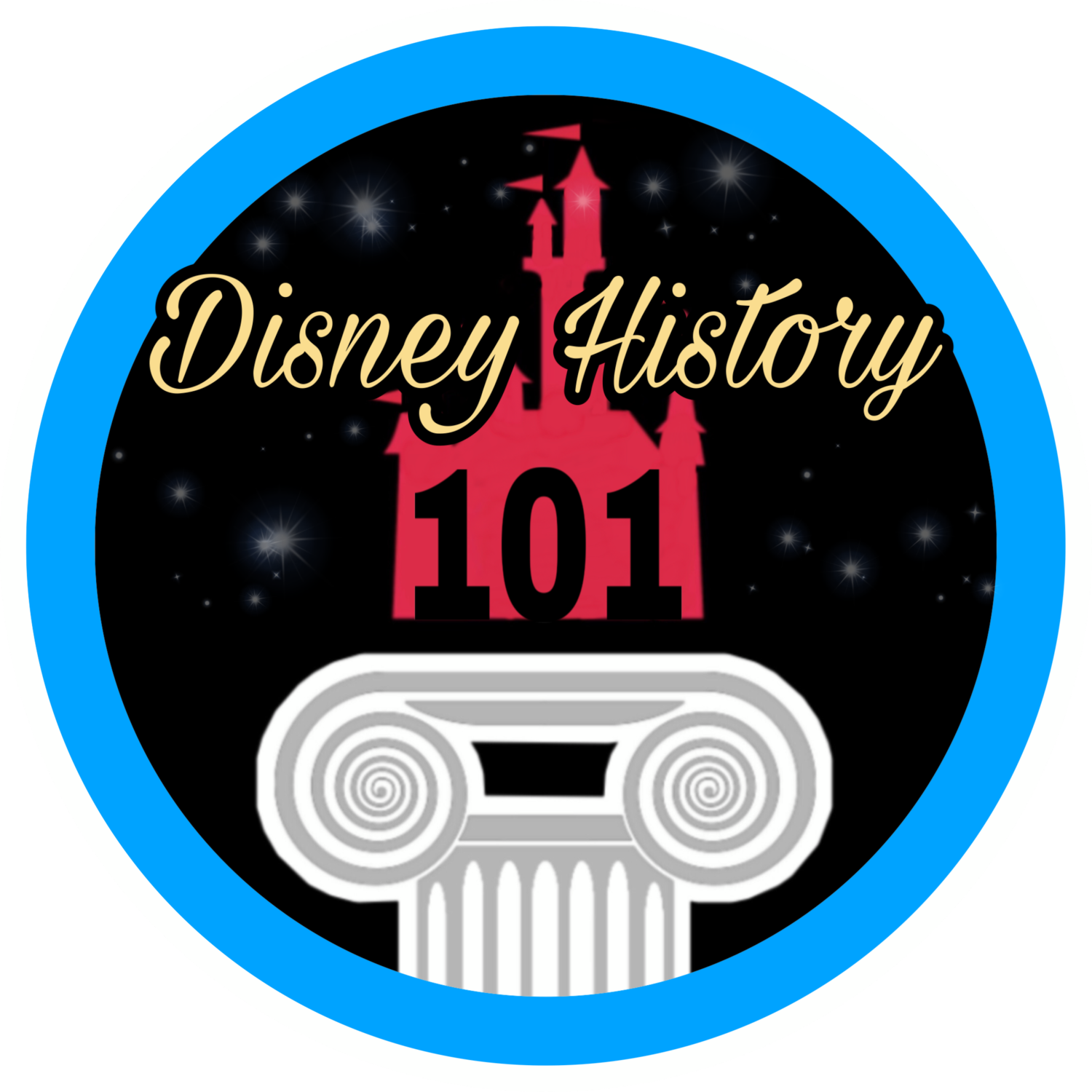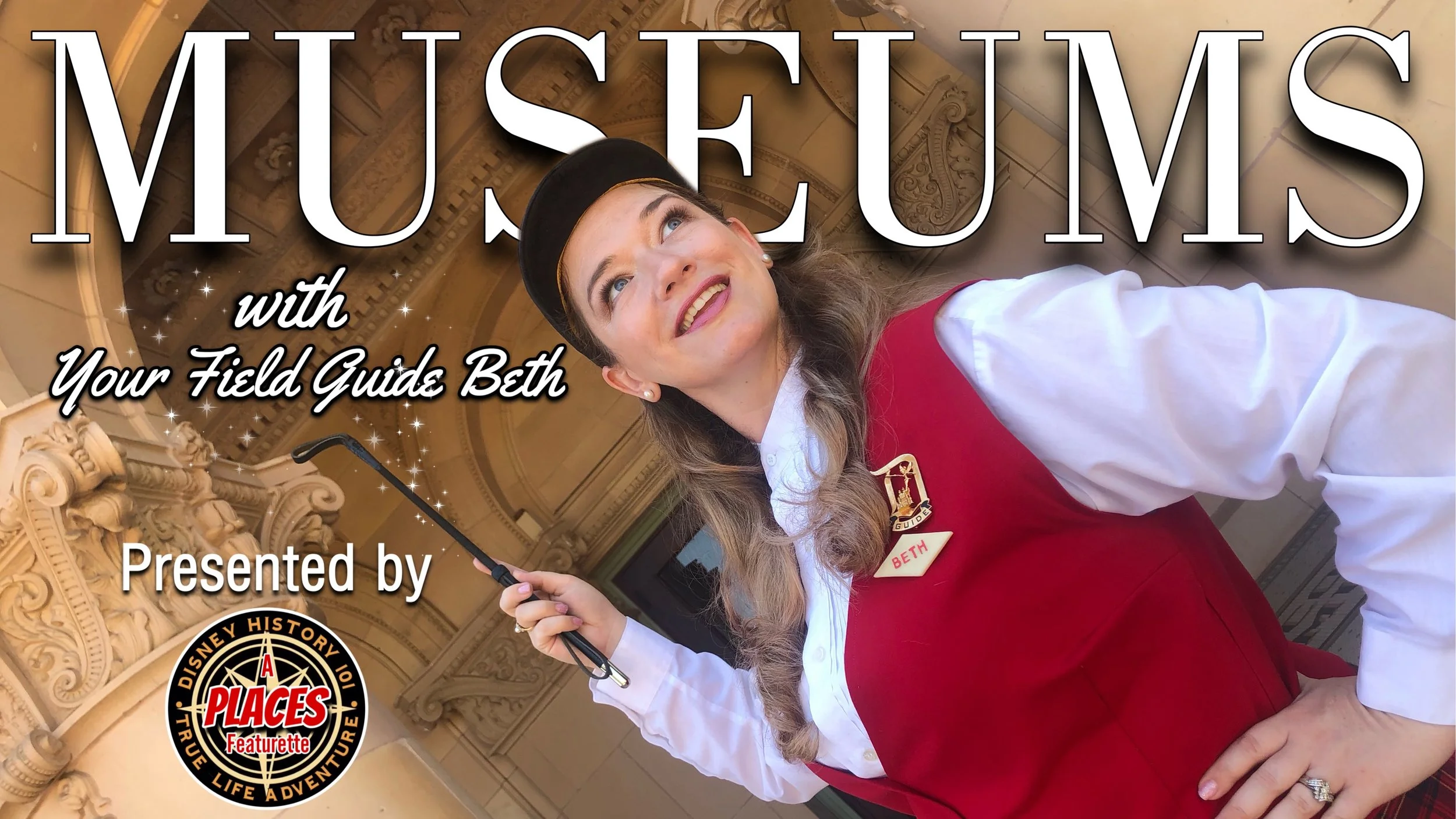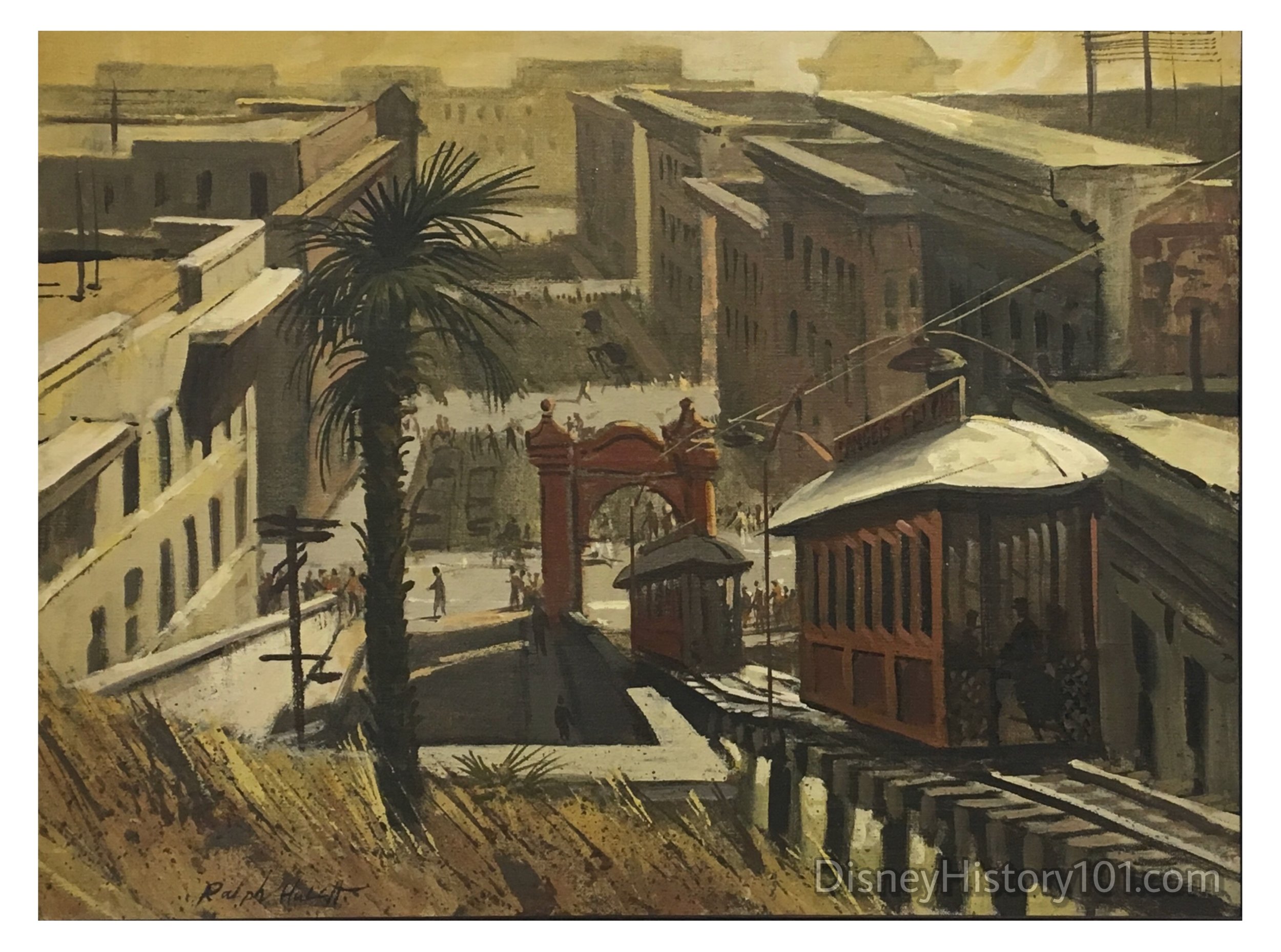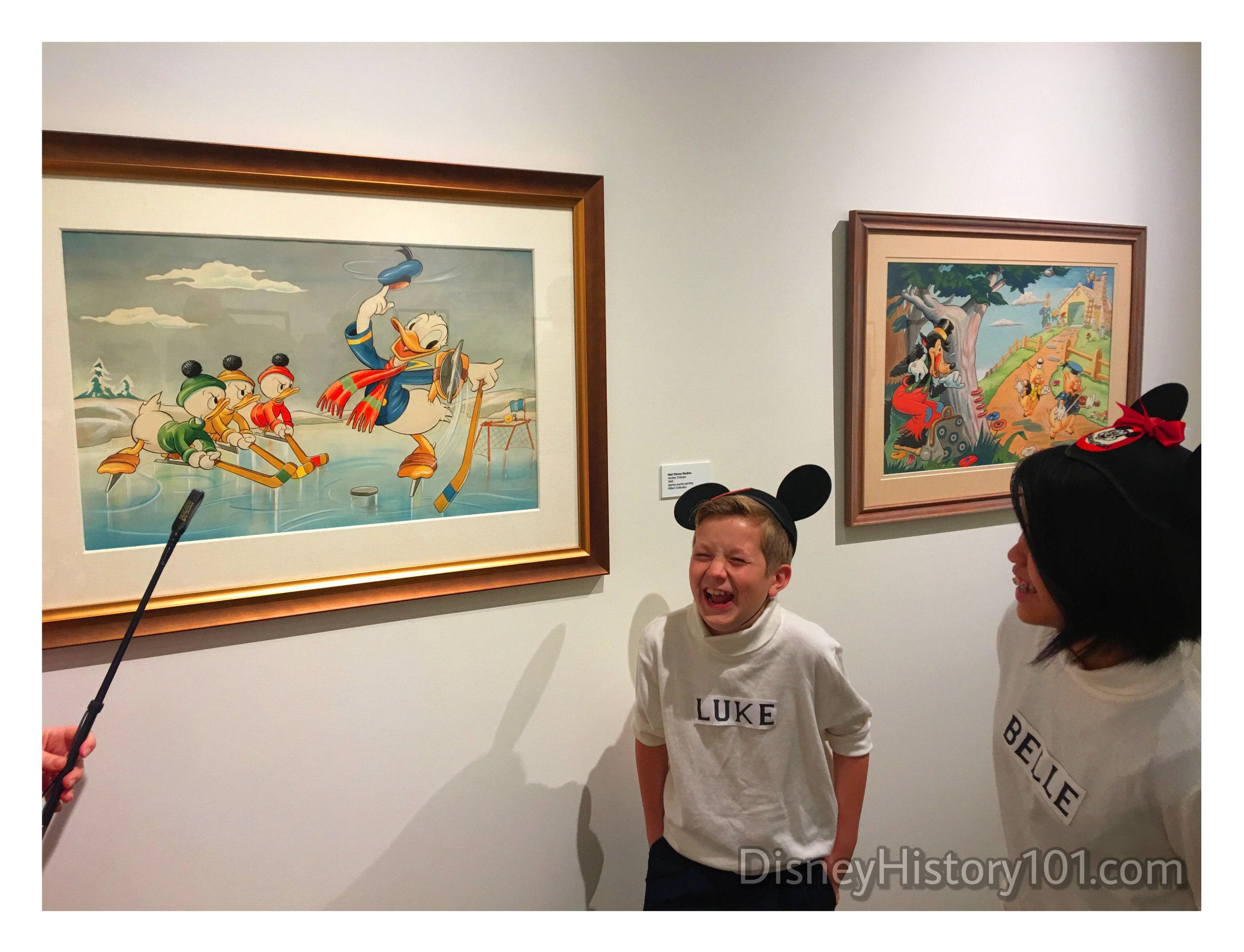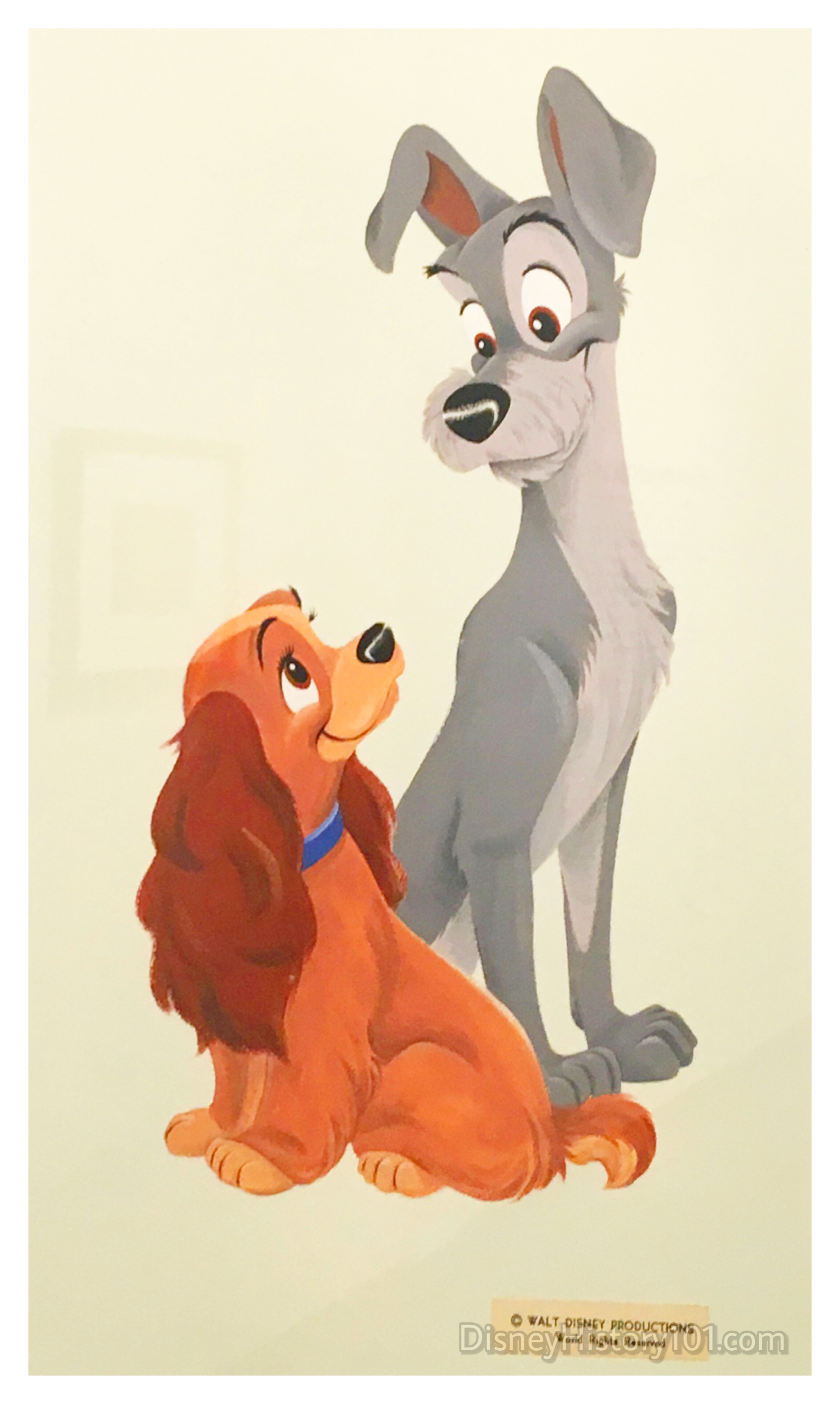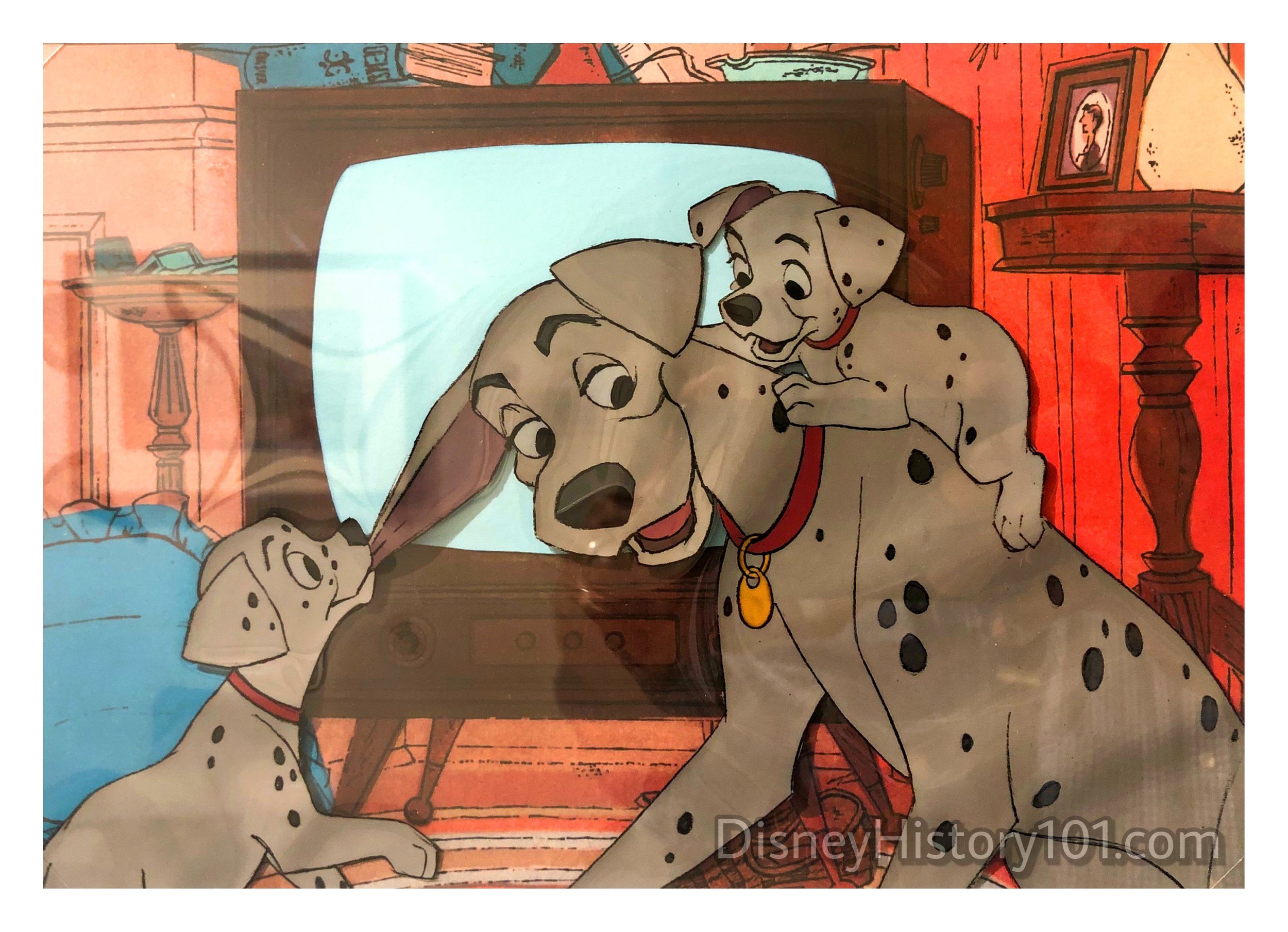167 North Atchison Street, Orange, California 92866
Located approximately fifteen minute’s drive from Disneyland (Anaheim, California) is one oft-overlooked Disney gem that’s worth discovering for yourself! The Hilbert Museum of California Art (located on the Chapman University campus) primarily focuses on California artists - most of which contributed to the California watercolor movement of the 1930s and 1940s. Mark and Janet Hilbert have been expanding one of the most comprehensive collections of representational California artwork over some twenty years. Among this fantastic array of California scenic paintings are numerous works of Chouinard institute alums and Walt Disney Studios artists. This collection has generously, freely been made accessible to students and the general art appreciating public.
Please, step this way as we preview their most amazing, unique collection of works produced by Walt Disney Productions artists!
“THE WALT-ERA SCENIC PAINTERS”
During the depression era, there were many artists that came to California searching for work and trying to survive. Some of these individuals had the good privilege to receive a scholarship to Madame Chouinard’s art school, where they were swiftly employed by studios like Walt Disney Productions. One such artist was a character animator named Preston Blair. During the 1930’s, Preston was assigned to animate Mickey Mouse’s short subjects, and was so good at it, that he was ultimately assigned to animate the character of Mickey Mouse for the Sorcerer’s Apprentice segment of the feature film Fantasia. Preston left during the 1941 animator’s strike, but while he was still employed by Walt Disney Studios he captured a rather scenic sunset over Los Angeles. This intersection depicted in watercolor during 1938, is virtually unrecognizable today as it is mounted by towering skyscrapers! Preston was no doubt one exceptional character animator (whose contributions we all continue to enjoy today), but we’ll always remember his whimsical Bunker Hill Cable Car when we hear the name Preston Blair.
PRESTON BLAIR (1908-1995)
Bunker Hill Cable Car
1938
Watercolor
If Preston’s last name sounds familiar, it’s because his brother Lee Blair was married to renowned designer and colorist Mary Blair. Lee also went to work for Walt Disney Studios during 1938, the very year that his brother produced Bunker Hill Sunset. Unlike his brother, Lee continued to work for Walt Disney Studios after the strike, going on to contribute to the 1943 package film Saludos Amigos.
LEE BLAIR (1911 - 1993)
Cable Car Celebration
1930s
David and Sally Martin Collection
Lee Blair’s talent for generating stunning scenic backgrounds was so notable, that he was promoted to serve as a landscape painting instructor for Walt Disney’s artists. Lee taught these evening classes through Chouinard institute in Los Angeles.
It wasn’t all business for Lee. He deeply loved his wife Mary, and the couple shared a passion for the grassy Palos Verdes’ seaside cliffs. Four years before his talent lead him to acquire a position painting backgrounds for Walt Disney Studios, Lee incorporated his two favorite subjects in “Mary by the Sea” (1934).
LEE BLAIR (1911-1993)
Mary by the Sea
1934
Oil on canvas
In preparation for Saludos Amigos, Lee and his wife Mary joined Walt and Lillian Disney on a (Good Neighbor Policy sponsored) “Goodwill” tour of South America. Many other artists joined them on this artistic excursion, like prolific landscape painter Ralph Hulett.
Ralph painted scores of background pieces, from castles and enchanted forests of Walt Disney’s Snow White and the Seven Dwarves to the mysterious jungles of Walt Disney’s The Jungle Book. As you walk the exhibition halls, you’ll notice many of Ralph Hulett’s representations of Los Angeles’ “urban jungle” on display inside The Hilbert Museum of California Art. Like Preston’s Bunker Hill Cable Car painting, these works are a testament to a common habit many artists had - to practice their craft around Los Angeles (and even all of California)!
RALPH HULETT (1915-1974)
Abandoned - Bunker Hill
1960s
Oil on canvas
RALPH HULETT (1915-1974)
Bunker Hill #1
1948
Oil on canvas
RALPH HULETT (1915-1974)
Olvera Street
February 1954
Watercolor
Automobile Club of Southern California
RALPH HULETT (1915-1972)
Crest of the Hill
1957
Oil on canvas
RALPH HULETT (1915-1974)
Angel’s Flight
1960s
Oil on canvas
RALPH HULETT (1915-1974)
Near Bishop
1950s
Watercolor on paper
RALPH HULETT (1915-1974)
View of Death Valley
1950s
Watercolor on paper
RALPH HULETT (1915-1974)
Malibu
1960s
Watercolor on paper
RALPH HULETT (1915 - 1974)
“Downtown San Francisco”
c.1950
The Hilbert Collection
Claude Coats was another distinct background artist whose layered style is especially apparent in films like The Old Mill, Snow White and the Seven Dwarfs, and Ferdinand the Bull. Claude went on to develop an array of colorful stylized backgrounds for Walt Disney Studios diverse films over the years, including Dumbo, Saludos Amigos, Victory Through Air Power, The Three Caballeros, Make Mine Music, Melody Time, Song of The South, The Adventures of Ichabod and Mr. Toad, Fun and Fancy Free, Cinderella, Alice in Wonderland, Peter Pan, and Lady and the Tramp. Claude and his wife were avid travelers, gathering inspiration for his work from the places they would visit. (Notice the following painting of Claude’s which depicts workers around a circus tent.)
Claude was so good at set design, that Walt personally positioned him as a Disneyland Art Director in 1955. Now, Claude would use his power to develop magnificently immersive settings, for attractions like the Grand Canyon and Primeval World Diorama, The Submarine Voyage, and Mr. Toad’s Wild Ride. Claude would also help develop attractions for the 1964 - 1965 New York World’s Fair (like the Ford Magic Skyway). Amidst his 54 years with Walt Disney Studios, Claude continued his keen enthusiasm for painting scenes during his personal time.
CLUADE COATS (1913-1992)
Circus
Watercolor on paper
Background artists weren’t all male, as our next subject proves. Dorothy Sklar worked for Walt Disney Studios’ Ink and Paint Department for a time, and her trained eye for color translated into quite unique stylized backgrounds. She too would practice her skill in various Los Angeles locales, like the corporate sponsored Pacific Ocean Pier (an amusement park which was considered a rival to Disneyland for nearly a decade).
DOROTHY SKLAR (1906-1966)
Toonerville
1946
Watercolor on paper
WED employee CLEM HALL may be best known for his conceptual renderings of Disneyland attractions like The Haunted Mansion and Space Mountain, but he too was known to dabble in landscapes and cityscapes from time to time.
CLEM HALL (1913 - 2003)
San Francisco Cityscape
c.1950s
Donna Vasseghi Collection
Last (but certainly not least), be on the look-out for six scenic works by former Walt Disney Studios background artist Eyvind Earle. His influential style is readily seen throughout Walt Disney Studios short films like Toot, Whistle, Plunk and Boom, Pigs is Pigs, and Paul Bunyan. Aside from his numerous short film contributions, Eyvind is most remembered for his contributions toward the artistic style of Walt Disney’s feature-length film Sleeping Beauty.
During his personal time and later years, the prolific Eyvind continued his scenic works of jewel-encrusted, tree-covered hills, groves and forests (among other subjects). An assortment of six diverse Eyvind Earle paintings have been permanently donated to the Hilbert by The Earle trust.
SANCTUARY
1996
Oil
The Hilbert Permanent Collection
Gift of the Earle Family Trust
“SPEAKING OF AMUSEMENT PARKS. . .”
During the late 1930s and early 1940s, Walt would take his young daughters Diane and Sharon to Griffith Park to ride a Spillman engineered carousel. According to Walt’s own words, these experiences were instrumental in the creation of Disneyland. There were only two Spillmans in Los Angeles, the only other existing one was situated in Lincoln Park. Both were identical.
This 1937 oil painting produced by Barse Miller captures the Lincoln Park Spillman Engineering carousel during a post-depression era.
During 1976, the Lincoln Park Spillman carousel was burnt to the ground by vandals. While the Griffith Park Spillman carousel lives on today, memory of the Lincoln Park carousel exists through a few extant photographs and paintings like this one by Barse Miller.
“BARSE MILLER”
“If I had the Wings of an Angel”
1937
Oil on canvas
The Spillman carousel legacy (of amusement attractions in a park setting) partially lives on through places like Disneyland, Anaheim, California!
This temporary piece was part of the Bradford J. Salamon collection briefly on loan during 2018.
“PRODUCTION ART AND LICENSED ARTWORK”
By the 1940s, Walt Disney Studios animation artwork was on display in many major museums and collections. Notable among these were the Metropolitan Museum of Art, New York, Museum of Modern Art,, New York, Cleveland Museum of Art, Toledo Museum of Art, William Rockhill Nelson Gallery, Kansas City, Mo; Phillips Memorial Gallery, Washington, D.C.; San Francisco Museum of Art, and Honolulu Academy of Arts to name a few.
I would like to present just a sampling of Mark Hilbert’s Walt Disney Studio collection, which is showcased on a rotational basis within The Hilbert. This artwork was originally created by artists at Walt Disney Studios for publicity, merchandising, and film production purposes.
The Hilbert has several Jaymar Puzzle paintings featuring Walt Disney Productions characters, like this one inspired by the 1933 short film Three Little Pigs.
This original 1937 Snow White production cel with background prepared through Courvoisier Galleries, 1937.
This original 1937 Snow White production cel with background prepared through Courvoisier Galleries, 1937.
Here’s a Jaymar puzzle painting inspired by the Donald Duck short film The Hockey Champ (1939). Jaymar held multiple licenses for featuring many of Walt Disney’s catalogue of characters during the 1940s and 1950s
This original production cel featuring Pinocchio and his conscience was used in production of the 1940 film. This piece was part of a former exhibit entitled THE MAGIC OF DISNEY ART : FEATURING PINOCCHIO.
Here’s another Pinocchio cel with a custom background prepared by Courvoisier Galleries. This piece was part of a former exhibit entitled THE MAGIC OF DISNEY ART : FEATURING PINOCCHIO.
This cel was used in production of the landmark Goofy short film, The Art of Skiing, 1941.
Mrs. Jumbo’s Bundle, cel prepared by Courvoisier, 1941.
Original Bambi production cel, with background by Courvoisier, 1942.
Another licensed Donald Duck Jaymar puzzle painting with characters resembling some of the cast of Bambi.
This Melody Time (1948) cel features Hardie Gramatky’s Little Toot!
A Mary Blair Alice in Wonderland story scene, 1951
A completed Alice in Wonderland cel starring The Queen of Hearts and The King of Hearts, 1951
Lady and the Tramp publicity painting produced by the Walt Disney Studios Illustration Department. This was utilized for promotional materials related to the film.
An animation cel used in production of the 1955 release Lady and the Tramp.
One of Eyvind Earle’s test pieces produced for Sleeping Beauty (1959), was based on Gothic Illuminated manuscripts like Tres Riches Heures du Duc de Berry (c.1412)
Original One Hundred and One Dalmatians production cel, and background, 1961.
This image was created as promotional tie in for a re-release of Walt Disney’s Jungle Book.
A gouache studio illustration used to promote Mickey’s Christmas Carol (1983).
This near-lifesize C-3PO portrait (by Bradford J. Salamon) isn’t a Disney-related painting, but it was just too neat to not share with you!
Remember to regularly check THE HILBERT MUSEUM OF CALIFORNIA ART lineup of guest speakers and special nighttime events!
Pictured : Museum Director Mary Platt & Disney Legend Floyd Norman.
The Hilbert Museum of California Art is a treasure trove of inspiration and nostalgia, freely open for the public’s enjoyment. Don’t forget that the museum subsists, largely on generous donations from guests like you. You must know that EVERY dollar helps preserve gems like this both now, and for future generations.
